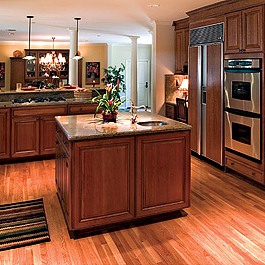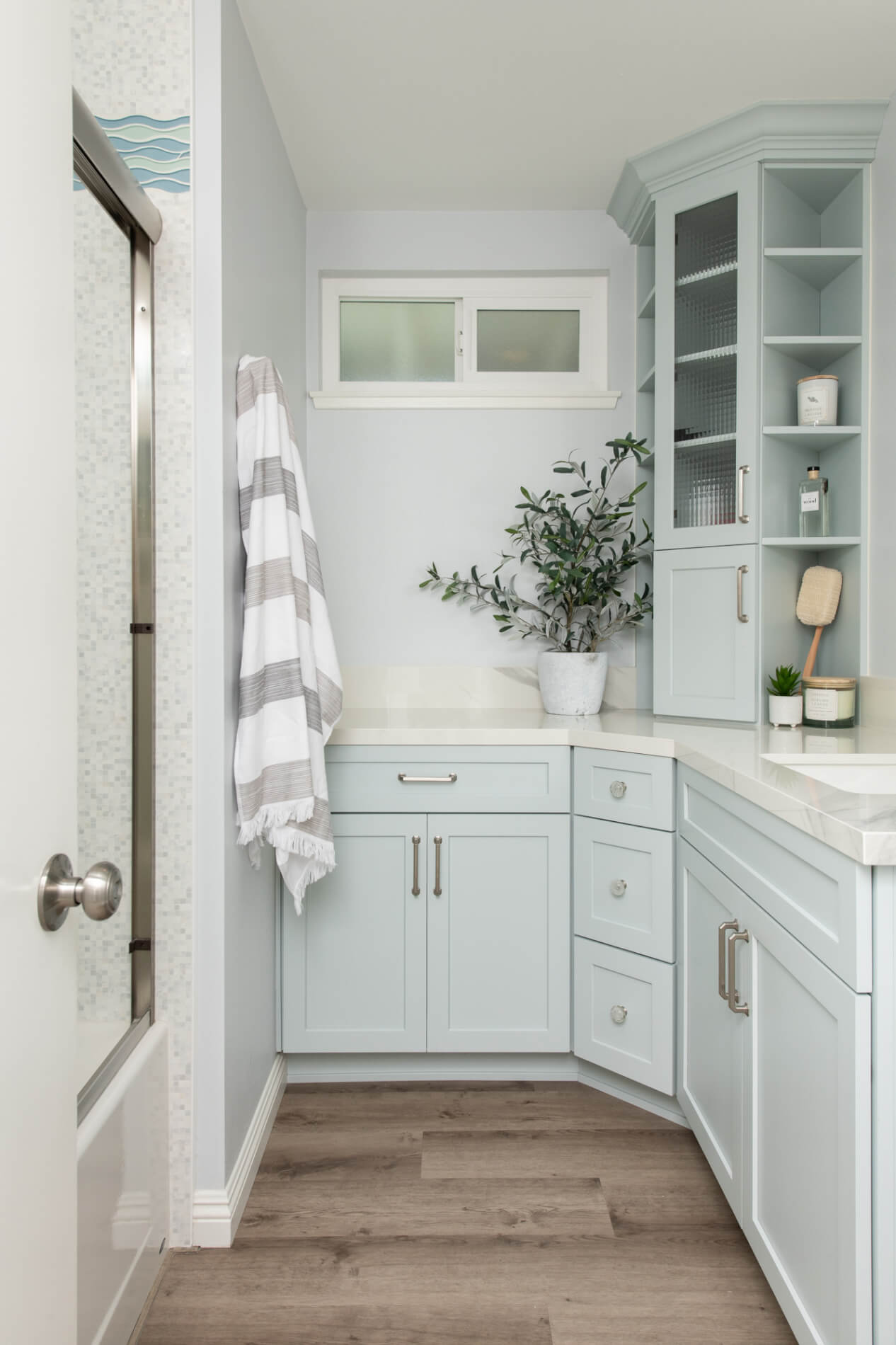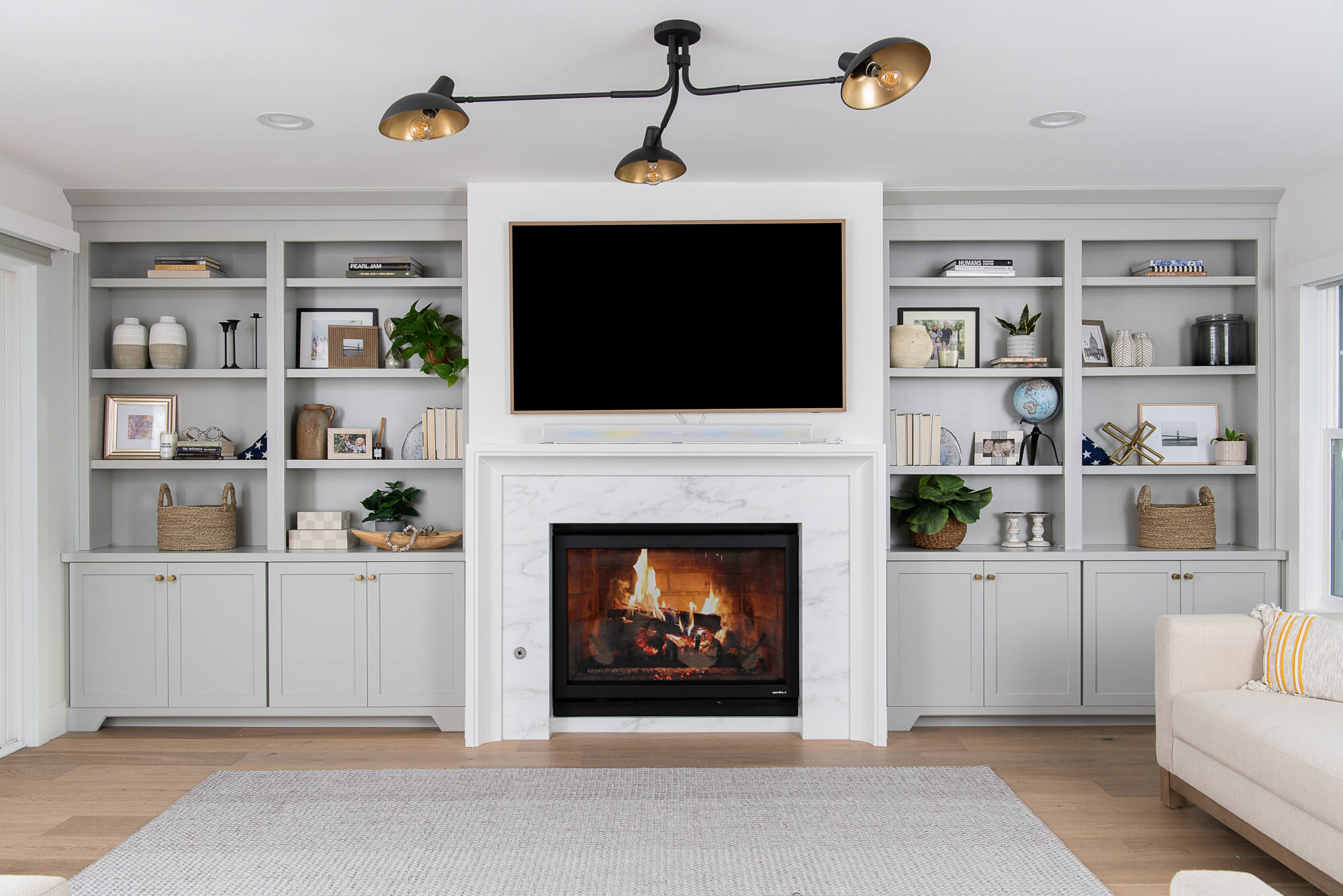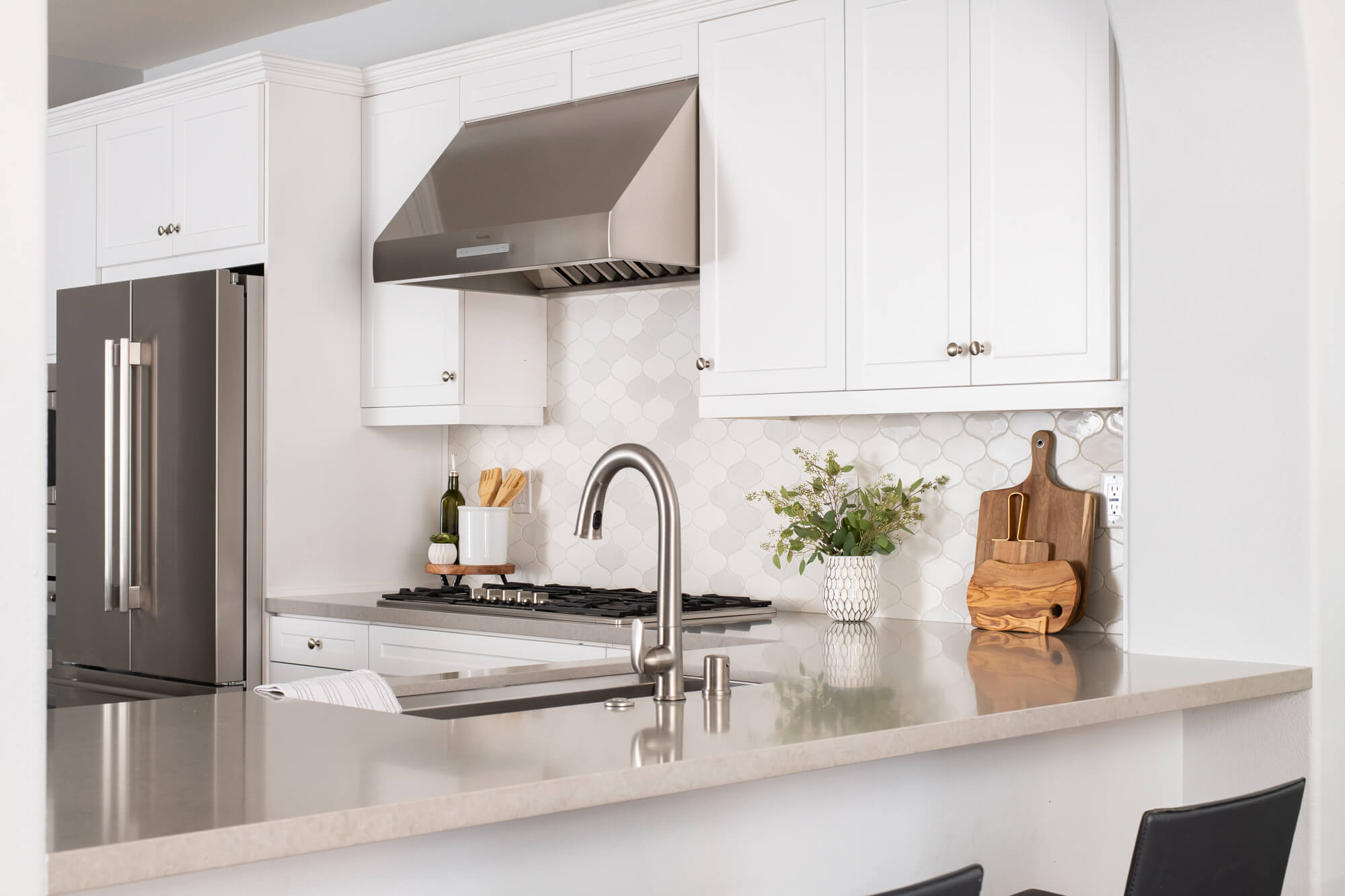These days everything happens in the kitchen; cooking, cleaning, entertaining, homework, the list goes on. That’s why it is important to select the kitchen flooring that will be the best for your situation. We have listed the pros and cons of popular flooring materials to help you determine which is right for you.
Ceramic Tile
The go-to kitchen flooring surface, ceramic tile will work for just about any style and budget. There are limitless options for color, size, shape and pattern, so you can create the look that works with the style you’re aiming for, whether that’s sleek or arts & craft.
Pros: Ceramic tile stands up to wear and tear, and is very easy to clean. The huge variety of low-priced options makes it one of the most affordable flooring choices.
Cons: A negative to the tile being ultra-durable, is that dishes or glass dropped on it is virtually guaranteed to shatter. It also can be cold and hard for your feet, but using a rug, or similar product can help ease discomfort. Any liquids can make the floor slippery, but you can get more traction by selecting a more textured tile. The grout will need periodic sealing.
Cost: About $3 to $8 per square foot, uninstalled.
Natural Stone
Natural Stones are becoming more and more popular in the kitchen, and not just on the countertops. Many people pick natural stones such as granite, slate, limestone or travertine because of the variations in color, pattern and texture. These differences create a visual depth that’s hard to replicate and natural stone instantly creates an upscale look.
Pros: Stone floors are durable and require little care. Like tile and concrete, they’re cool on the feet, but for us in Southern California, this doesn’t present too much of an issue.
Cons: Natural stone is expensive and not for those trying to install it on your own. Scratches and chips can be a problem with softer stone, such as travertine; and dirt can pile up in tiny crevasses. Because stone is very porous you will need protective sealing at regular intervals.
Cost: About $15 to $30 per square foot, uninstalled.

Solid Wood
It’s tough to match the warmth and charm of solid wood. Even in a space with a lot of moisture and heavy foot traffic, wood can last indefinitely if it’s properly treated and cared for.
Pros: Whether you realize it or not, there are tons of options with wood.Thin strips or wide planks; maple or cherry; there is a wood that will accent your home and never go out of style. It can be sanded and refinished to keep it looking its best.
Cons: Liquids can cause damage if they’re not wiped up right away, so you will have to be careful with spills. Wood dents and scratches easily, so it will need periodic refinishing.
Cost: About $4 to $12 per square foot, uninstalled.
 Vinyl
Vinyl
Vinyl has always been very affordable, but not exactly considered a stylish material. However, nowadays, vinyl comes in a wide range of finishes, textures and designs. You would be surprised with how realistic vinyl can mimic stone, wood, and ceramic tile.
Pros: One of the most inexpensive flooring options on the market, vinyl can approximate the look of pricier materials at a fraction of the cost. It’s a snap to clean, easy to patch if a spot gets damaged, and you can usually install it on your own, which eliminates the expense of hiring a pro.
Cons: Vinyl can dent, bubble or curl over time. Sharp objects may tear it, and grit and dirt can scratch and dull its finish. Compared with other flooring materials, it may show wear and tear after about 5 years.
Cost: About $1 to $5 per square foot, uninstalled.
 Linoleum
Linoleum
People tend to confuse linoleum with vinyl, but it’s a completely different substance. A past staple, linoleum an all-natural material made from linseed oil, resins, wood flour and more — fell out of favor as synthetic flooring became more popular. But in recent years, its has gained the attention of ecoconscious consumers and style savants.
Pros: Much of linoleum’s appeal lies in its versatility. Because it comes in just about every color you can imagine, you can go as subtle or as bold as you want. It can be easily cut into one-of-a-kind patterns, such as the circular motif pictured here. Plus, it’s affordable, durable and easy to maintain.
Cons: With time and use, Linoleum will wear and fade. Many manufacturers add a protective coating before the material is sold; without this coating, the floors may need periodic waxing and polishing.
Cost: About $4 to $7 per square foot, uninstalled. Custom colors and patterns add to the price tag.
 Concrete
Concrete
Concrete flooring has come a long way as it has risen in the design world because of its contemporary, industrial-chic look. Concrete floor does not have to mean a dull sea of gray; today, it can be stained, stamped, scored or acid etched for visual appeal.
Pros: Concrete ideal in warm climates as it stays cool even in the hottest weather. It’s nearly indestructible, no matter what you spill on it or drag across it. And if you get tired of the look, you’ll have a ready-made subfloor for carpeting, tile or another surface.
Cons: Concrete is difficult to work with, so you’ll almost certainly need professional installation. As with tile and stone, concrete can be unforgiving on feet. It’s porous, so sealing is a must to ward off stains especially in a high-traffic area such as a kitchen.
Cost: Having a basic concrete floor poured from scratch can cost anywhere from hundreds to thousands of dollars, depending on the size of the space and other variables. Concrete finishing treatments, such as staining, stamping or etching, range from about $2 per square foot to $15 or more per square foot.
 Laminate
Laminate
Laminate flooring, which is composed of several layers of engineered material sandwiched together, is designed to imitate the look of wood or tile. It resists scratches and scuffs, thanks to an internal “wear layer,” so it’s great for homeowners whose kitchens must contend with small kids, pets or extremely heavy use.
Pros: Laminate requires very little maintenance just sweep and damp-mop. It’s easy to find in versions that make DIY installation possible. Costs generally are moderate.
Cons: Although it may look like wood or tile from a distance, it won’t substitute for the depth and texture of those substances. Unlike wood, laminate can’t be refinished if it starts showing its age, it will need to be replaced completely.
Cost: About $2 to $4 per square foot, uninstalled.